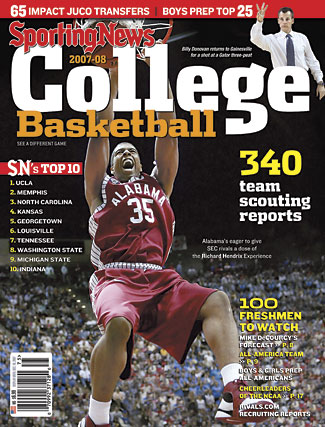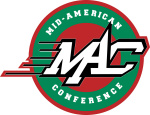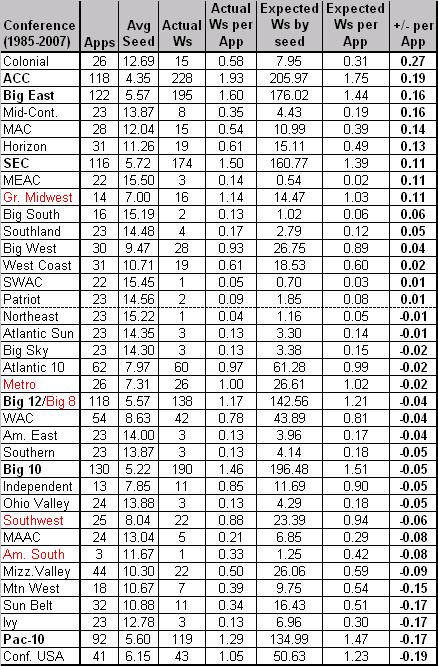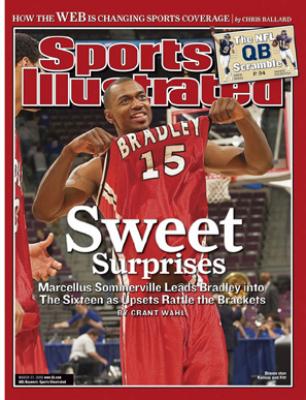Posted by rtmsf on October 21st, 2007
A month ago we gave you our reviews of the Athlon and Lindy’s preseason mags.
We’ve been busy plugging away at the conference previews, but in the interim, a few more mags have hit the shelves. So here’s the third installment of our continuing series of reviews of the preseason magazines.
Next Up: Sporting News/Street & Smith’s.
Note: Yes, TSN and S&S, two of the oldest and most respected preview issues, have joined forces this year on their college basketball preview. It remains to be seen whether this is a good idea.

I. Covers (5 pts) – are they cool? inclusive?
- 12 regional covers hitting only the BCS conferences. Definitely a major conference bias here.
- Coolest Cover – see above – one thing we really like is that most of the covers are full-color action shots. The Roy Hibbert (getting serviced by Vandy’s Ross Neltner?) and Mario Chalmers shots are our favs after Richard Hendrix above. Great cover.
- Oops. The Athlon, Lindy’s and TSN issues all use the exact same action shot for Brook Lopez of Stanford on their Pac-10 cover. Unfortunately for Cardinal fans, Lopez is not reaching for a textbook.
- Total Points = 4
II. Ease of Use (5 pts) – how hard is it to find confs/teams?
- Not a fan of their setup here. They divide the conferences into high, mid, and low-major categories, then list them alphabetically within each section. Quick – is the Big West a mid-major or low-major league? The MAC? How about the Southern Conference? TSN considers the MAC a high major (???) and the others as mid-majors, which means we were flipping all over the place to find these leagues. Difficult navigation.
- Within the league, they then list each team by predicted order of finish. Typical fare here.
- Standard format otherwise – roundup, features, analysis of teams, recruiting, stats and schedules in that order.
- Total Points = 2.5
III. Roundup (10 pts) – every mag has one – tell us something new!
- The Late, Late Show is a short article explaining the basis behind TSN’s pick of UCLA as the #1 team in America.
- Decourcy’s Directives are short narratives on the following topics: Coach Calipari’s calculations; Don’t Cry for Duke; One-and-Outs to Watch; and, Recipe for a Championship. The only interesting information here is in the Recipe section, which explains that most national champions for the last 20 yrs have had at least one NBA-caliber big man and guard on their roster (exceptions: MSU-2000; Arkansas-1994; Syracuse-2003).
- TSN also provides three teams of All-Americans, led by seven sophomores and two freshmen among the fifteen. We like that they took some chances, going with Eric Gordon (Indiana) and Chase Budinger (Arizona) on the first team over some of the better-known names.
- There is also a Top 25 with a couple of sentences describing each team’s strengths, but it is notable that TSN doesn’t bother with predicting the NCAA field anywhere within the magazine.
- There is one page devoted to listing the Top 100 freshmen, but rather than listing them #1-#100, they made a confounding decision to order them geographically (all-east, all-south, etc.) and then alphabetically. There’s no way to intelligently distinguish OJ Mayo (all-east) from Edwin Rios (all-south).
- Another page lists transfers eligible this season and next, but again they’re not ranked in any discernible manner. This page also lists all the coaching changes from the offseason.
- Overall, this section is incredibly weak compared to the other previewed magazines, and especially considering that TSN and S&S were once considered the bibles of this genre. We literally learned nothing new in this section.
- Total Points = 3
IV. Features (15 pts) – give us some insightful and unique storylines.
- Features – what features? There is only one feature article, which if we said was shocking would be severely understating our sentiment. So surely that one article has something to do with this season, right? Nah. Try Whatever Happened To… Teddy Dupay, JR Van Hoose and Dane Fife, three (white) players who were HS stars ten years ago but didn’t ultimately make it to the League. Don’t get us wrong, we actually appreciate the concept of an article like this. The problem is that it’s the only feature article TSN felt necessary to give us in the entire magazine. That’s beyond unacceptable, especially when you consider the cache of writers that TSN has at its disposal.
- Cheerleaders. Ok, we enjoy a photo collage of college cheerleaders as much as the next guy, but the only other “feature” that TSN
insults us with offers us is a five-page spread of various gals in tricky positions. Again, this just seem so beneath TSN and S&S to pull out the cheerleader photo section to try to increase sales. But it’s becoming increasingly apparent that they just don’t care anymore. Good grief – they even put the Duke cheerleaders in the spread (Doherty was right)!!
- FWIW, the Texas gal on p. 21 is absolutely scorching hot, with nods to Miss UCLA and Miss Florida on p.19. Surprisingly, we found Miss Kentucky (p.20) to be one of the fugliest of the group, along with Miss Hawaii (p.19). And Miss Wichita St. (p.18) can bend in ways that aren’t quite believable.
- Total Points = 3
V. Predictions (20 pts) – how safe are their picks? do they take any chances? are they biased toward the big boys?
- TSN’s Top 25 is pretty standard issue big conference fodder. They do put Memphis at #2, Gonzaga at #12 and Xavier at #25, but every other team is a BCS school. Since there are no NCAA predictions, we can only assume their top 4 is their predicted F4, which would mean UCLA, Memphis, UNC and Kansas are their choices.
- Big Conference Bias. Assuming top 16 = Sweet 16, then Gonzaga and Memphis are the only exceptions. As for the Top 25, here’s the conference breakdown – Pac-10 (5), Big 12 (4), Big East (4), ACC (3), SEC (3), Big 10 (3), CUSA (1), WCC (1), A10 (1).
- Surprises. Some teams that are getting some preseason pub that TSN doesn’t think much of include: Syracuse (10th in the Big East, which presumably would mean not an NCAA team); UConn (7th); USC (7th in Pac-10) & Vanderbilt (5th in SEC East). On the flip side, teams that TSN values more than others include: Georgia (3d in SEC East); Penn St. (4th in Big 10) & NC State (3d in ACC).
- Boldest Prediction. Not much in the way of excessively bold predictions, but we believe that a lot of these prognosticators are going to regret giving a 5-11 ACC team (NC State) so much preseason hype this year.
- We’re really annoyed that TSN doesn’t give us a field of 65, at minimum.
- Total Points = 12
VI. Conference Pages (5 pts) – as a primer for the conference, how much can we learn here?
- High Majors. The twelve conferences TSN designates as high majors each gets a full page primer, and there’s a lot to like here. The predicted order of finish uses a cool feature with arrows that shows how the team is trending this year – up, down, or steady. There’s a five man all-conference team, a short narrative breakdown of the league, and the most inclusive list of superlatives we’ve yet seen (15-20 different superlatives). There is also a third of the page devoted to ranking the recruiting classes within the conference and short analyses of each incoming player.
- Mid Majors. TSN anoints only six leagues as mid-major leagues, and each of these leagues gets a half-page of analysis, including the predicted order of finish, a short narrative, an all-conference team, recruiting rankings and three superlatives.
- Low Majors. The remaining conferences receive one page each, nearly the same as the mid-majors with the exception that the narrative is really just a paragraph wrapup.
- Total Points = 5
VII. Team Pages (20 pts) – how in-depth is the analysis? where does it come from? is it timely and insightful given this year’s squad or is it just a rundown of last year’s achievements?
- Roughly the top 2/3 of the high major teams get a full page of analysis from TSN; the remainder get a half page. Again, there’s a lot to like here – the writing is solid, giving decent insight into the strengths and weaknesses of each team without merely another rundown of each player and his stats. There is also a section on power ratings by five categories, a five-year wins trend, an impact rookie blurb and a brief but useful team statistics table.
- The mid-major conference projected champions get the same treatment as the lower third teams of the high majors – a half-page with much of the same information above. The remainder of mid-major teams simply get the one-paragraph rundown treatment.
- The low-majors all get a single paragraph, whether they’re the projected champion or not.
- For the top twelve conferences, the analysis is the best we’ve seen this year thus far. The writers clearly know these teams and do a good job at breaking down what to watch for this season. The remaining leagues get short shrift, but those fans are not the target audience.
- Total Points = 16
VIII. Recruiting (5 pts) – we want to know who the top players are coming into college bball, where they’re going and who to watch for next year.
- As mentioned above, each major conference page has a substantial section on recruits for each school and rankings within each league.
- See above for our issue with their list of the top 100 incoming players.
- There is no listing of the best incoming recruiting classes nationally anywhere in the magazine, which is incomprehensible to us.
- Once upon a time, S&S was the best place to get recruiting information, but that time again seems to have passed. They have four pages of names of players without ranking any of them outside of their Boys All-America Team (top 20). It’s nice they give a paragraph describing the skill set of each of those twenty players, but there’s just no way to compare players outside of that grouping.
- With that said, we continue to enjoy the All-Metro Teams of twenty or so HS basketball hotbeds around the country. It gives us something to look for in our local area.
- We also enjoy that TSN lists the top 25 HS teams for 2007-08.
- This magazine has more information on high school prospects than any other we’ve seen, and yet they muff it by not presenting the information in a way most people would want to see it. Lists are fine, but they have to be useful for comparison.
- Total Points = 4
IX. Title IX Guilt (aka Chick Ball) (5 pts) – the less the better…
- The women’s preview is a Top 25 with four pages of analysis, but thankfully they stuck it in the back of the magazine.
- Where they really go wrong is by wasting five more pages in the back on girls’ HS All-Americans and a HS top 20. We cannot believe that anyone would buy this magazine to get this information.
- Total Points = 2
X. Intangibles (15 pts) – what’s good and bad about the magazine as a whole?
- This magazine is trying to be everything to everyone. You can easily tell which parts were the expertise of TSN and which were the responsibility of S&S, and as such, the magazine seems random and incomplete in parts. For example, in addition to the prep information in the back, the magazine also gives us a full page on D2, D3 and NAIA basketball (with top 10s and All-Americans). And if that’s not enough, it also has a juco section, complete with a Top 10 and an article explaining why juco talent is getting deeper.
- There is also a full page of individual and team stats for D1, D2, D3 and NAIA, plus two pages of women’s stats. Wouldn’t it have made a lot more sense to give us six pages of D1 stats instead? Are a substantial number of NAIA fans really buying this magazine?
- Schedules. By virtue of its release date, TSN has most every team’s schedules in complete form at the very back of the magazine. The back page also has a nice roundup of all the in-season tourneys and conference tournament information.
- The writing of this magazine is better than Lindy’s and Athlon, but the only writing actually performed is in the conference and team previews. It was very disappointing there weren’t more features at the front.
- Total Points = 10
RTC Grade for Sporting News/Street & Smith’s = 61.5 pts
Basis: We have to say that we were really disappointed with this magazine, largely because when we were growing up, the TSN and S&S previews were must-reads in our house. Wow, how the mighty have fallen. How can you not have feature articles or build an NCAA field? How can you not rank-order recruits? How can you add a cheerleader section and spend page after page giving us NAIA stats? At this point, and we never thought we’d say this, the TSN magazine is definitely worse than Lindy’s and no better than Athlon. This would have been unheard of a few short years ago. The only value of this magazine is in the quality of the writing of the analyses for the high major conferences and teams – that is the one (and only) area where TSN trumps the other two. What a disappointment.
Grading Scale:
- 90-100 pts – exceptional quality in all areas – must buy and keep on-hand all season!
- 80-89 pts – very good quality mag – worthy of purchasing and reading cover-to-cover
- 70-79 pts – average, run of the mill magazine – some value in certain areas but weak in others – tough call as to whether to purchase it
- 60-69 pts – magazine on the weaker side, but may still have some positive attributes – probably not worth the money, though
- 0-59 pts – such a low quality magazine that it’s not worth any more than the five minutes you thumbed through it at the store
| 2007-08 season preview
| Tagged: all-americans, arkansas, big east, big west, brook lopez, chae budinger, cheerleaders, dane fife, duke, edwin rios, eric gordon, florida, georgetown, georgia, gonzaga, hawaii, jr van hoose, kansas, kentucky, mac, matt doherty, memphis, michigan st, mike decourcy, nc state, oj mayo, pac-10, penn st, preseason magazines, roy hibbert, season preview, southern conference, sporting news, stanford, street and smith\'s, syracuse, teddy dupay, top 25, ucla, uconn, unc, usc, vanderbilt, wichita st, xavier
Share this story





















































